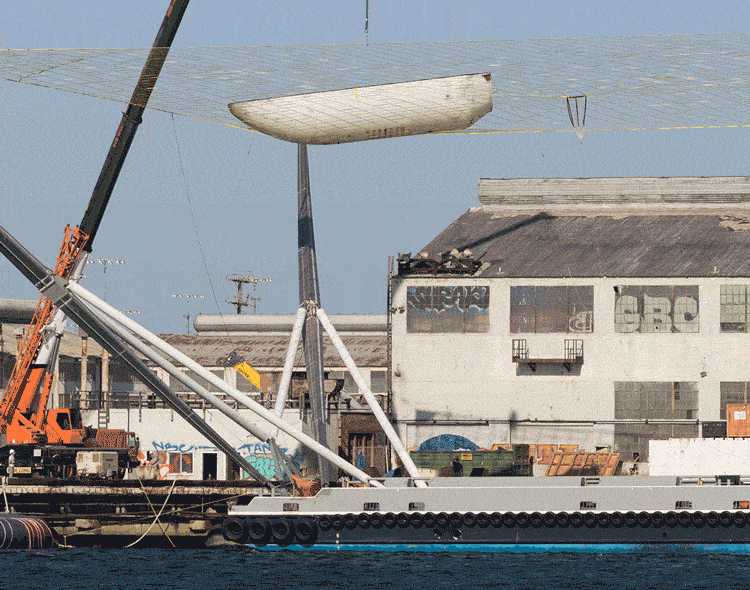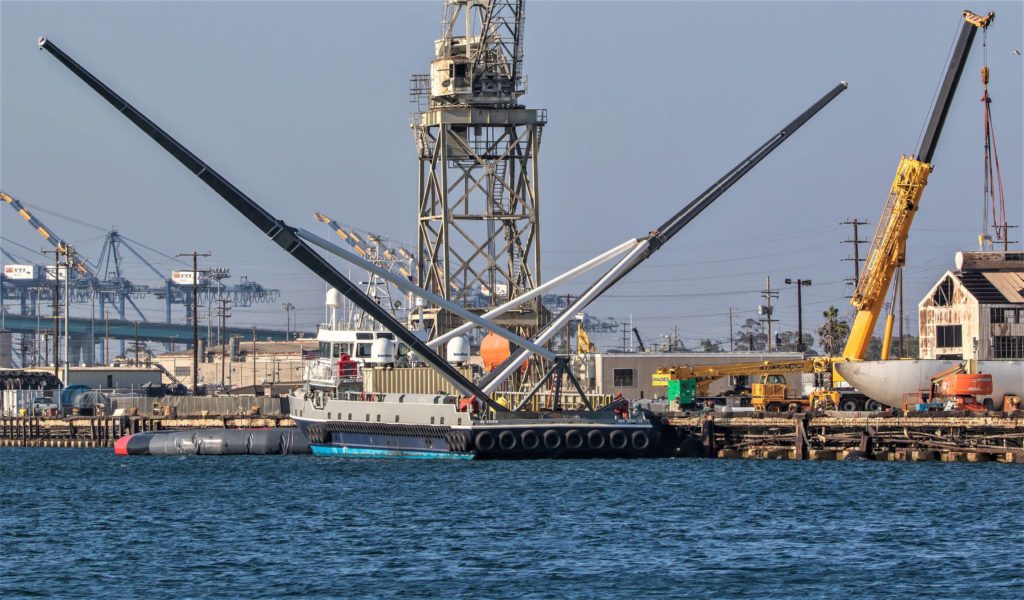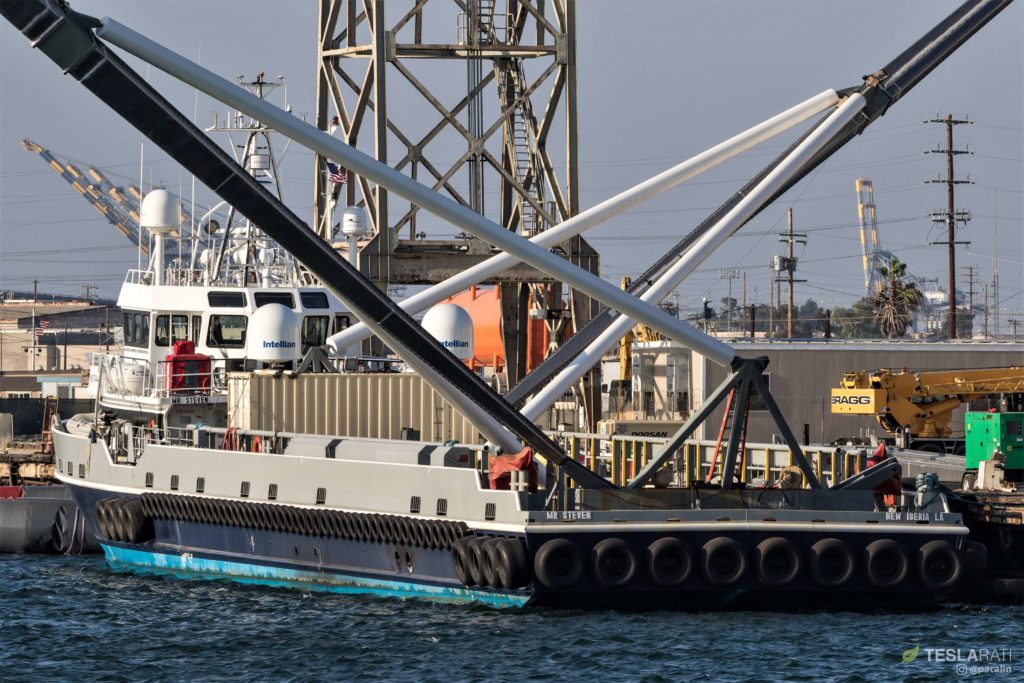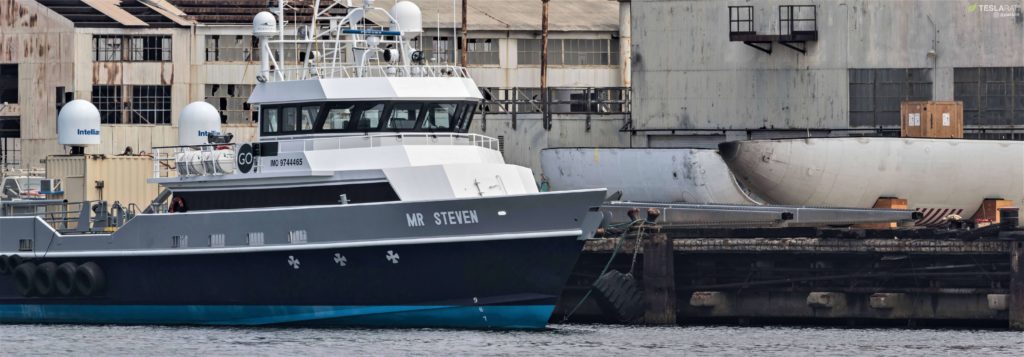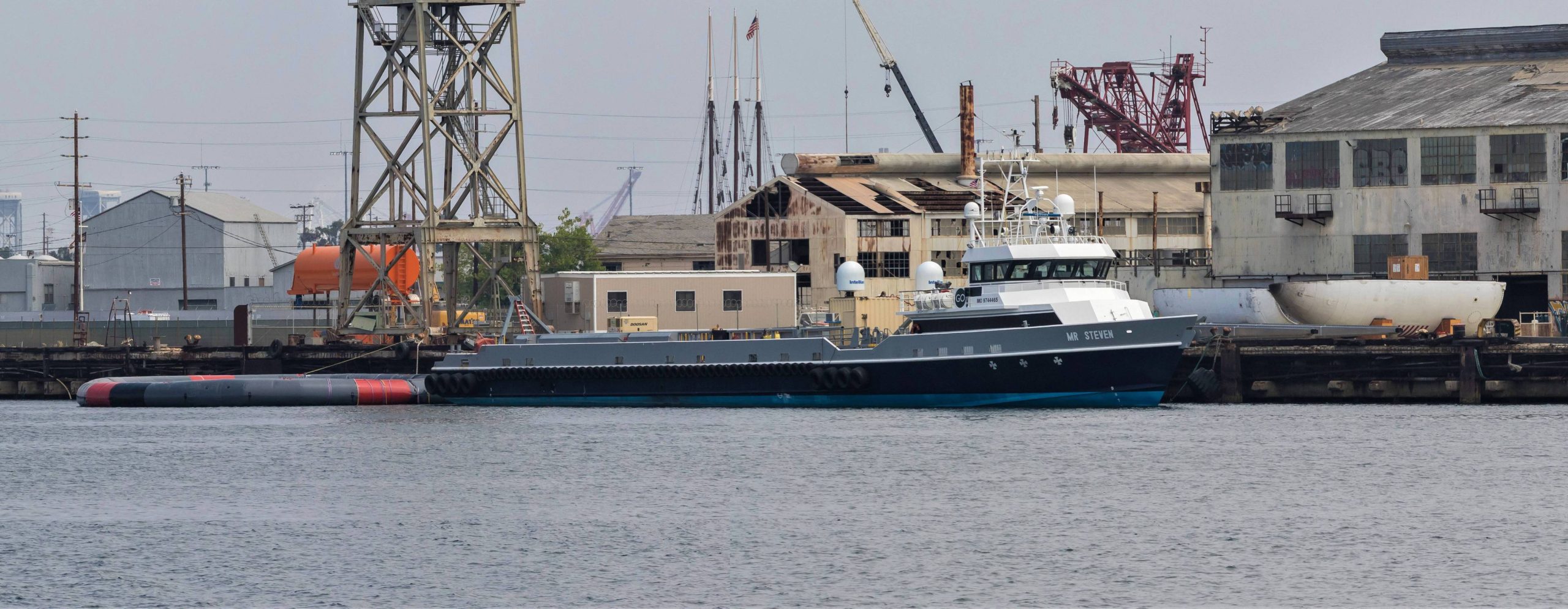
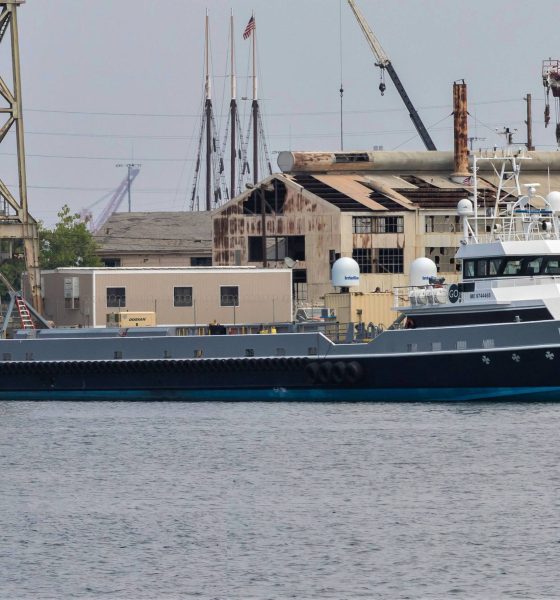
News
SpaceX fairing catcher Mr Steven armless once more for maintenance and upgrades
SpaceX’s Falcon 9 fairing catcher ship Mr Steven has had all four new arms removed as the company’s recovery engineers and technicians continue to iterate on his fairing recovery mechanism and operational strategy.
The purpose of this round of arm removal is unknown, but the work going on at Berth 240 is nevertheless a fascinating glimpse into SpaceX’s preferred mode of operations, mainly focusing on constant improvement, tireless iteration, and minimized bureaucratic burden.
Two of Mr Steven’s arms were laying dockside yesterday. Perhaps adjustments due to last week’s fairing drop tests? Getting close to next fairing recovery attempt mid-September. #SpaceX #mrsteven @Teslarati pic.twitter.com/Ev3r2N2bBv
— Pauline Acalin (@w00ki33) August 19, 2018
Originally spotted testing the behavior of a Falcon 9 fairing half in Mr Steven’s new net around August 13th, West Coast recovery technicians had completely removed all four of the vessel’s large arms and all eight of his arm booms just one week later, leaving the boat armless for the first time in roughly two months.
The speed of that seemingly significant hardware removal alone is rather interesting, suggesting that routine removal of Mr Steven’s arms could be wholeheartedly feasible for short-term requirements, be it a clearance issue for traversing canals or perhaps even some sort of modular recovery setup that could optimize Mr Steven for catching Falcon fairings, Dragons, and perhaps even Falcon upper stages.
- A gif demonstrates just how taut Mr Steven’s net can be, thanks to mechanized rigging. 08/13/18 (Pauline Acalin)
- Mr Steven sans two arms, August 19th. Note the red and black inflatable structure floating at his bow. (Pauline Acalin)
- Just two arms and a dream. (Pauline Acalin)
- Mr Steven sans arms once more, August 21st. (Pauline Acalin)
Wild speculation aside, it can be said with certainty that the ability to remove Mr Steven’s arms so rapidly will make the lives and work of the technicians and engineers tasked with maintaining, testing, and improving the vessel’s recovery mechanisms considerably easier, demanding just a few days of work for complete disassembly. SpaceX CEO Elon Musk did note around the time of the upgraded arm and net installation that those new arms would be retractable and “springy, like a highly damped trampoline.”
The inclusion of large white damping booms to support that supposed springiness was indeed visually confirmed while SpaceX was testing the vessel’s net with a real Falcon 9 fairing, but it’s quite clear that no retraction mechanism was included on the first iteration of Mr Steven’s upgraded arms. Chances are good that this full-up arm removal is related in some way to Musk’s retraction reference, perhaps triggered by observations made during that aforementioned testing with a real fairing half, just days after which arm removal had already been half-completed.
Yes, and springy, like a highly damped trampoline
— Elon Musk (@elonmusk) July 11, 2018
Mr Steven’s next shot at catching a Falcon 9 fairing will follow the launch of Argentinian Earth-sensing satellite SAOCOM-1A, to be followed up soon after with the SpaceX launch of SAOCOM-1B. 1A is currently targeting late September or early October for its journey to orbit.
Meanwhile, the lightweight payload (~1600 kg/~3500 lb) and relatively low orbit (near-polar, 620 km/385 mi) have aligned to allow the Falcon 9 Block 5 booster the chance to be the first SpaceX rocket to debut the company’s West Coast rocket landing zone, companion to the pad’s two well-worn East Coast brethren.
For prompt updates, on-the-ground perspectives, and unique glimpses of SpaceX’s rocket recovery fleet check out our brand new LaunchPad and LandingZone newsletters!

News
Tesla Model Y demand in China is through the roof, new delivery dates show
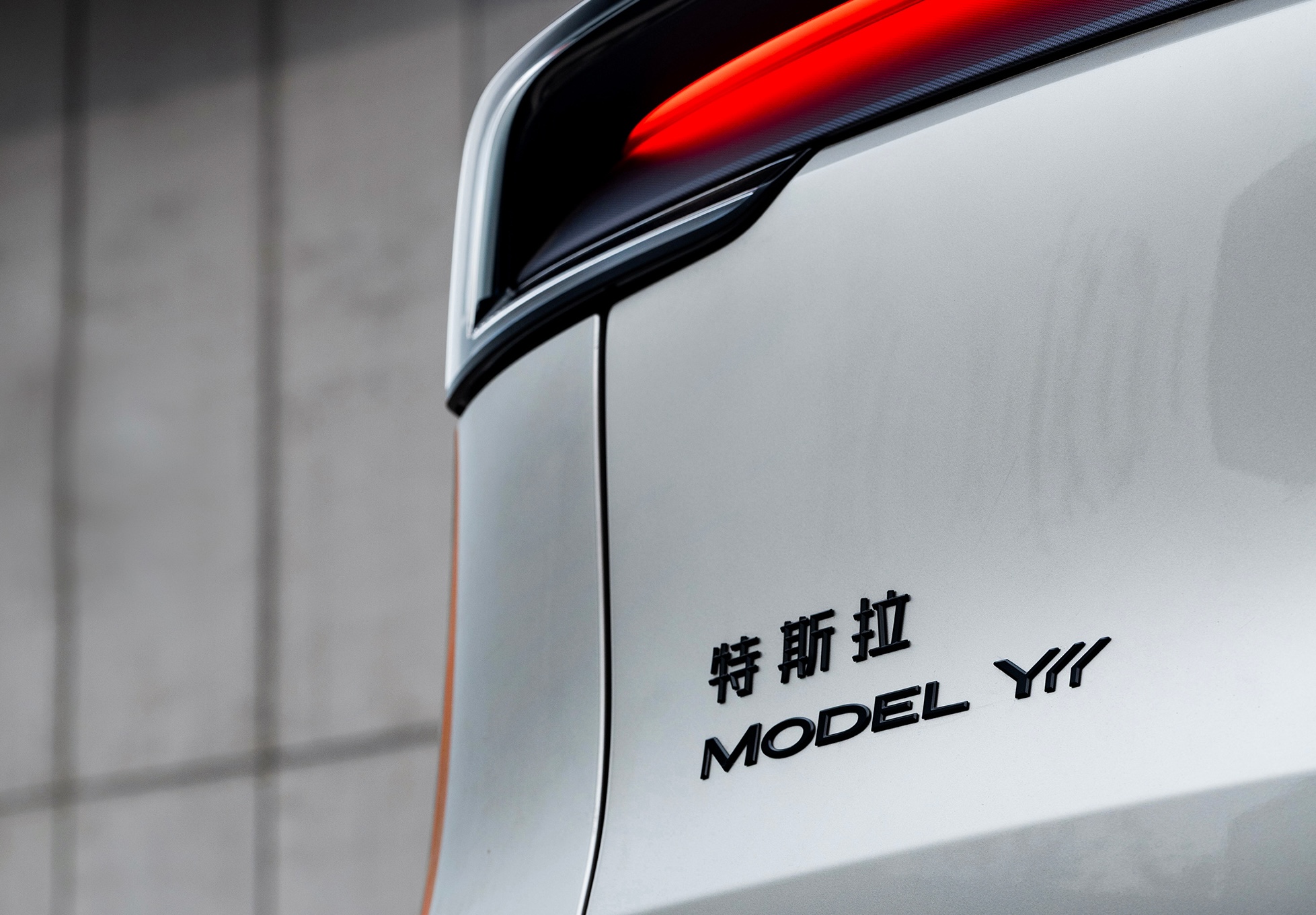
Tesla Model Y demand in China is through the roof, and new delivery dates show the company has already sold out its allocation of the all-electric crossover for 2025.
The Model Y has been the most popular vehicle in the world in both of the last two years, outpacing incredibly popular vehicles like the Toyota RAV 4. In China, the EV market is substantially more saturated, with more competitors than in any other market.
However, Tesla has been kind to the Chinese market, as it has launched trim levels for the Model Y in the country that are not available anywhere else. Demand has been strong for the Model Y in China; it ranks in the top 5 of all EVs in the country, trailing the BYD Seagull, Wuling Hongguang Mini EV, and the Geely Galaxy Xingyuan.
The other three models ahead of the Model Y are priced substantially lower.
Tesla is still dealing with strong demand for the Model Y, and the company is now pushing delivery dates to early 2026, meaning the vehicle is sold out for the year:
NEWS: New orders for all four Tesla Model Y trims in China are now officially sold out for 2025, as the factory’s remaining production capacity for the year has been fully allocated.
Estimated delivery dates for new orders now show January-February 2026. pic.twitter.com/Dfnu7yY58N
— Sawyer Merritt (@SawyerMerritt) December 1, 2025
Tesla experienced a 9.9 percent year-over-year rise in its China-made EV sales for November, meaning there is some serious potential for the automaker moving into next year despite increased competition.
There have been a lot of questions surrounding how Tesla would perform globally with more competition, but it seems to have a good grasp of various markets because of its vehicles, its charging infrastructure, and its Full Self-Driving (FSD) suite, which has been expanding to more countries as of late.
Tesla Model Y is still China’s best-selling premium EV through October
Tesla holds a dominating lead in the United States with EV registrations, and performs incredibly well in several European countries.
With demand in China looking strong, it will be interesting to see how the company ends the year in terms of global deliveries.
News
Tesla Europe rolls out FSD ride-alongs in the Netherlands’ holiday campaign
The festive event series comes amid Tesla’s ongoing push for regulatory approval of FSD across Europe.

Tesla Europe has announced that its “Future Holidays” campaign will feature Full Self-Driving (Supervised) ride-along experiences in the Netherlands.
The festive event series comes amid Tesla’s ongoing push for regulatory approval of FSD across Europe.
The Holiday program was announced by Tesla Europe & Middle East in a post on X. “Come get in the spirit with us. Featuring Caraoke, FSD Supervised ride-along experiences, holiday light shows with our S3XY lineup & more,” the company wrote in its post on X.
Per the program’s official website, fun activities will include Caraoke sessions and light shows with the S3XY vehicle lineup. It appears that Optimus will also be making an appearance at the events. Tesla even noted that the humanoid robot will be in “full party spirit,” so things might indeed be quite fun.
“This season, we’re introducing you to the fun of the future. Register for our holiday events to meet our robots, see if you can spot the Bot to win prizes, and check out our selection of exclusive merchandise and limited-edition gifts. Discover Tesla activities near you and discover what makes the future so festive,” Tesla wrote on its official website.
This announcement aligns with Tesla’s accelerating FSD efforts in Europe, where supervised ride-alongs could help demonstrate the tech to regulators and customers. The Netherlands, with its urban traffic and progressive EV policies, could serve as an ideal and valuable testing ground for FSD.
Tesla is currently hard at work pushing for the rollout of FSD to several European countries. Tesla has received approval to operate 19 FSD test vehicles on Spain’s roads, though this number could increase as the program develops. As per the Dirección General de Tráfico (DGT), Tesla would be able to operate its FSD fleet on any national route across Spain. Recent job openings also hint at Tesla starting FSD tests in Austria. Apart from this, the company is also holding FSD demonstrations in Germany, France, and Italy.
News
Tesla sees sharp November rebound in China as Model Y demand surges
New data from the China Passenger Car Association (CPCA) shows a 9.95% year-on-year increase and a 40.98% jump month-over-month.
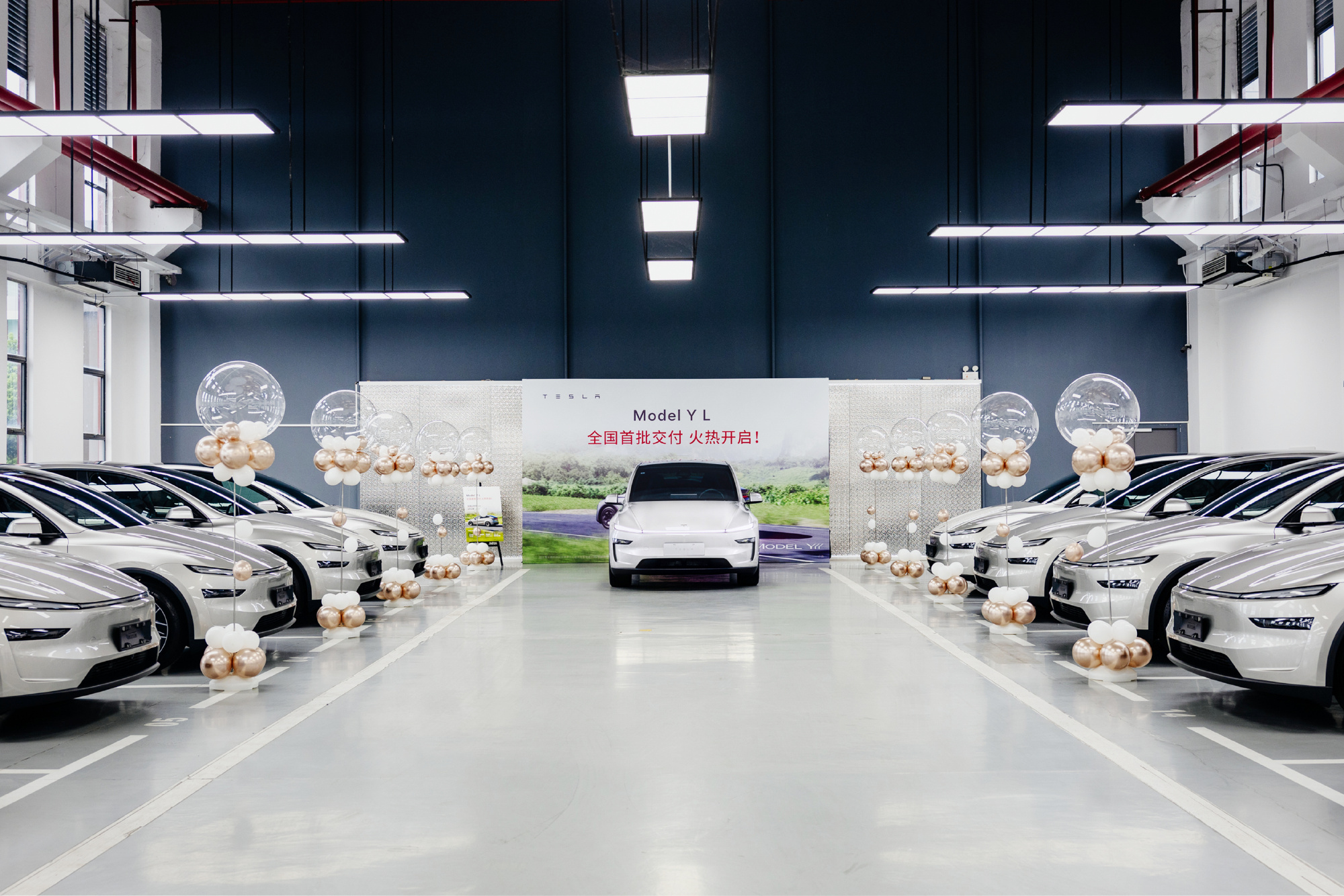
Tesla’s sales momentum in China strengthened in November, with wholesale volumes rising to 86,700 units, reversing a slowdown seen in October.
New data from the China Passenger Car Association (CPCA) shows a 9.95% year-on-year increase and a 40.98% jump month-over-month. This was partly driven by tightened delivery windows, targeted marketing, and buyers moving to secure vehicles before changes to national purchase tax incentives take effect.
Tesla’s November rebound coincided with a noticeable spike in Model Y interest across China. Delivery wait times extended multiple times over the month, jumping from an initial 2–5 weeks to estimated handovers in January and February 2026 for most five-seat variants. Only the six-seat Model Y L kept its 4–8 week estimated delivery timeframe.
The company amplified these delivery updates across its Chinese social media channels, urging buyers to lock in orders early to secure 2025 delivery slots and preserve eligibility for current purchase tax incentives, as noted in a CNEV Post report. Tesla also highlighted that new inventory-built Model Y units were available for customers seeking guaranteed handovers before December 31.
This combination of urgency marketing and genuine supply-demand pressure seemed to have helped boost November’s volumes, stabilizing what had been a year marked by several months of year-over-year declines.
For the January–November period, Tesla China recorded 754,561 wholesale units, an 8.30% decline compared to the same period last year. The company’s Shanghai Gigafactory continues to operate as both a domestic production base and a major global export hub, building the Model 3 and Model Y for markets across Asia, Europe, and the Middle East, among other territories.

